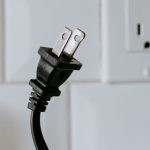Are you wondering how to be successful in flipping houses? The process can be immensely rewarding, but is not without its downsides. Consider these pros and cons.
What are the pros? The biggest advantage of house flipping is the potential for big profits, especially if you’re able to purchase the house for a low rate. You may only need to make a few relatively minor repairs in order to get the home ready to sell again – and in a low-inventory market, competition is automatically higher. Depending on the circumstance, you can also feel good knowing that you’ve helped to revitalize your community by giving an old or undesirable home a new lease on life.
What are the cons? First and foremost, there’s no guarantee that you’ll be able to flip your house, even in a competitive market. Flipping houses involves risk, and you need to be prepared for the possibility of putting money into a house that doesn’t sell (or sells for less than you expect it to). You may also be faced with unforeseen expenses that can easily blow your budget. Make sure you’ve got enough funds in place to deal with the unexpected without completely sinking your project.
Choosing a Property
It’s not always easy to find quality investment real estate in flipper markets with low inventory. Here’s how to choose a property with good resale potential.
Focus on location. In any market, location is the most important consideration. Properties sell faster when they sit near major thoroughfares, nice restaurants, good schools, shopping venues and other desirable areas.
Get in and get out. It’s almost always best to choose a property that can be rehabbed in a short amount of time. Every day, you will accrue costs related to utilities, insurance, taxes, maintenance and interest if you used loans to finance the purchase. Choose a property in relatively good shape and make sure it will appeal to a wide pool of prospective buyers.
Consider your margins. To make a profit, you need to consider the total sales price, rehabbing expenses and carrying costs (insurance, taxes, maintenance, utilities). You also need to factor in closing costs for both buying and selling long before you make an offer. Be sure to work with a knowledgeable local real estate agent who can help you with the estimates.
How to Get Financed
If you’re looking to flip a house, you’ll need a substantial amount of money upfront – not only to purchase the house, but also to cover the cost of renovations, taxes, and selling the home once it’s ready to flip.
Traditional mortgages are typically not the best choice for house flippers, mainly because they take longer to put in place and may come with requirements that are harder to meet. So what options are available, and what do they involve?
Hard money or bridge loans. Ideal for investors looking to buy, fix and sell a house quickly, these loans have less stringent approval requirements, so you can get financed quicker. The interest rates are higher, but the terms of the loan are shorter. (Generally speaking, hard money loans are given by private lenders, while bridge loans are offered by institutions.)
Private lenders. This option is similar to a hard money loan in that you’re receiving funds from a private vendor – the difference being that some private lenders might adjust their rates in exchange for other perks (like partnering with you on the flipping project, for example).
FHA and VA loans. The Federal Housing Administration (FHA) and the U.S. Department of Veteran Affairs (VA) offer special programs for those who qualify (active or former military members, or those who need financial assistance).
What to Renovate (and What to Skip)
Not all renovations add value to investment real estate. Here’s the best way to spend your money when flipping a house in a low-inventory market.
Enhance curb appeal. Spend some money to improve the appearance of the house. Clean up the landscaping, add a fresh coat of paint, make repairs and remove any eyesores. Fill driveway and walkway cracks, replace gutters, and repair or replace window screens.
Update fixtures. Avoid wasting money on pricey kitchen and bathroom upgrades, which don’t always deliver a worthwhile ROI. Instead, consider installing affordable new faucets and lighting fixtures, which can dramatically enhance the look and feel of a home. Updated hardware is also a great way to make outdated houses look more modern.
Eliminate concerns. Make sure to fix any issues that make the home less functional. Change furnace filters, repair leaky faucets, clean or replace the hot water tank, and unclog any slow drains. Consider swapping out windows to make the house more energy-efficient and make sure every appliance is working like a charm.
Sell or Rent?
One of the most important decisions you need to make when flipping a house is what to do after you’ve renovated it. Are you planning to sell it right away, or keep it and rent it out to tenants? We discuss the advantages of both options.
What are the pros of selling? Perhaps the biggest advantage to selling a house you’ve just flipped is the immediate profit you’ll enjoy – particularly in a low-inventory, high-competition market. (Bear in mind, though, that if you sell within one year after buying, you’ll have to pay a short-term capital gain tax.) If you’re looking to flip another property, selling provides you with funds to do so. Additionally, selling after you flip allows you to avoid the potential stress and hassle that comes with managing a rental property.
What are the pros of renting? If your plan is to flip to rent, you can employ a more long-term strategy with regard to upgrades, rather than paying a lot up front to implement all of your planned improvements (though you’ll have to do enough at the outset to ensure that the property is safe and attractive to renters). It’s also a flexible option if you think you may eventually want to sell but aren’t ready to do so yet.
Tax Implications
Investment real estate can be lucrative, especially in low inventory markets. But what are the tax implications of flipping a house? Here’s how to minimize your tax burden.
Understand how repeat flippers are taxed. Real estate is generally considered a capital asset with sale profits qualifying for preferential capital gain tax rates. That said, the IRS generally classifies repeat house flippers as dealers instead of investors. In this case, the houses are treated as inventory instead of capital assets, and the sale profits are treated as ordinary income, which is subject to the self-employment tax.
Plan for short-term ownership. Even if you only flip one or two houses, you may not qualify for a lower capital gain tax rate. This is because the IRS categorizes any real estate investment sold for profit as “normal income” if you own it for less than 12 months. You may be able to minimize your tax burden by keeping the property for at least 13 months.
Get help from an expert. Navigating IRS rules for capital gains and house flipping can be tricky. This is why it’s best to seek counsel from an experienced real estate agent and knowledgeable tax expert who can help you avoid costly mistakes and reduce your tax liabilities.



